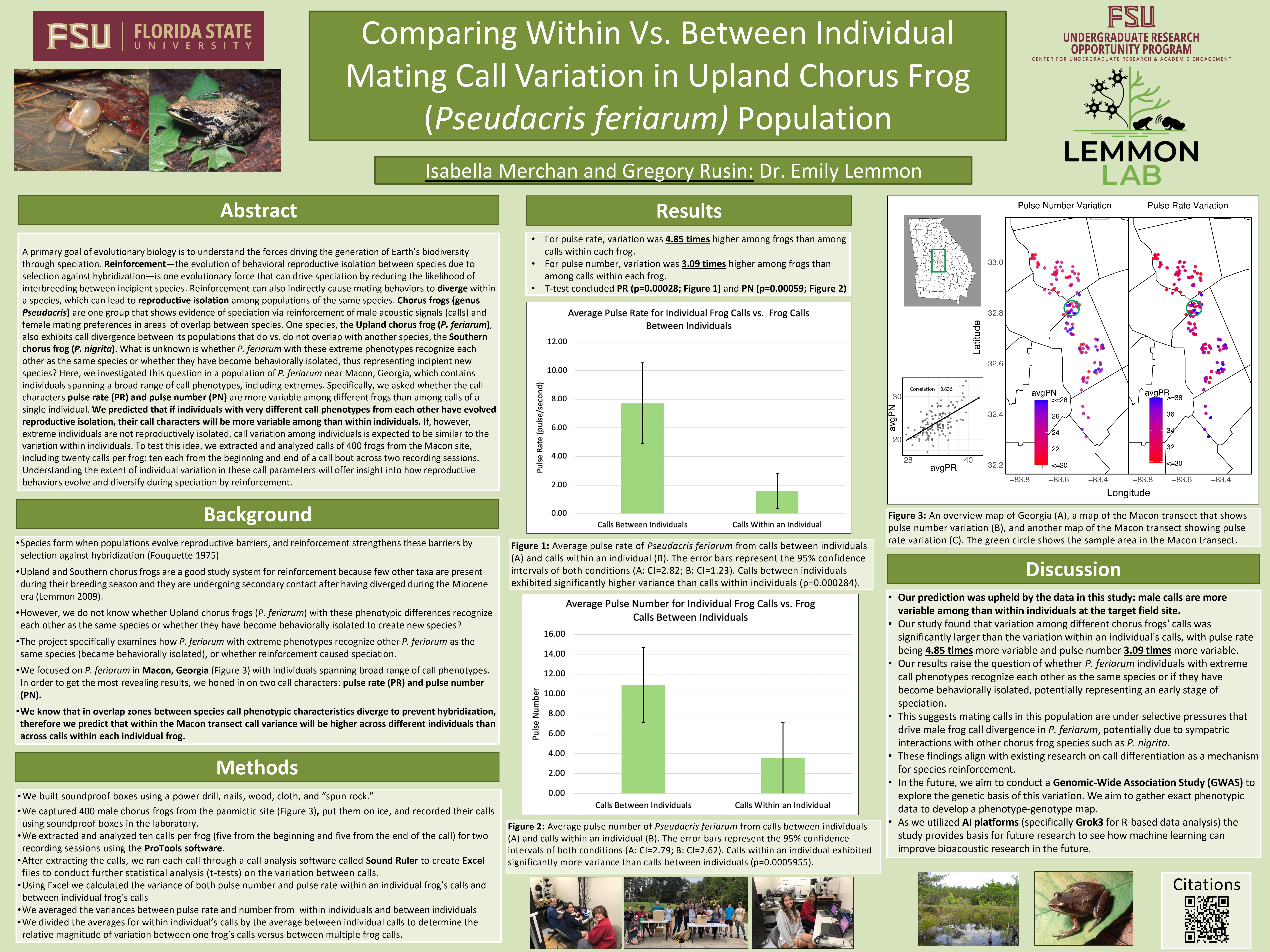Research Symposium
25th annual Undergraduate Research Symposium, April 1, 2025
Grzegorz (Greg) Rusin Poster Session 4: 3:00 pm - 4:00 pm/ Poster #113

BIO
My name is Grzegorz Rusin, I am from Jacksonville, Florida and am currently earning a Bachelor’s of Science in Biochemistry at Florida State University. My past research experience lies in the study of evolution, having completed the Undergraduate Research Opportunity Program (UROP) in an apprenticeship with Dr. Emily Lemmon studying the evolutionary divergence of male chorus frog mating calls in sympatry. My current research interests are still rooted in evolution but leaning to a microbiological scale, with a special interest in agriculture. My short term career aspirations are to complete a Directed Individual Study (DIS) in microbiology next semester with long term goals of successfully completing graduate school. After earning a PhD in Microbiology I will work to opening up my own laboratory to provide research opportunities for other undergraduate students.
Comparing Within Vs. Between Individual Mating Call Variation in Upland Chorus Frog (Pseudacris feriarum) Population
Authors: Grzegorz (Greg) Rusin, Emily LemmonStudent Major: Biochemistry
Mentor: Emily Lemmon
Mentor's Department: Biological Sciences Mentor's College: Arts and Sciences Co-Presenters: Isabella Merchan
Abstract
A primary goal of evolutionary biology is to understand the forces driving the generation of Earth’s biodiversity through speciation. Reinforcement—the evolution of behavioral reproductive isolation due to selection against hybridization—is one such force that can contribute to speciation by reducing interbreeding between closely related species. It can also indirectly cause divergence in mating behaviors within a species, leading to reproductive isolation among populations. Chorus frogs (genus Pseudacris) provide a model for studying reinforcement, as male acoustic signals and female mating preferences have evolved in response to species overlap. The Upland chorus frog (P. feriarum) exhibits call divergence between populations that do and do not overlap with the Southern chorus frog (P. nigrita). However, it remains unknown whether P. feriarum individuals with extreme call phenotypes recognize each other as the same species or if they have become behaviorally isolated, representing an incipient new species. To investigate this, we studied a population of P. feriarum near Macon, Georgia, where individuals exhibit a broad range of call phenotypes. Specifically, we examined whether pulse rate (PR) and pulse number (PN) vary more among individuals than within individuals. We predicted that if extreme call phenotypes indicate reproductive isolation, call variation among individuals would exceed variation within individuals. We analyzed 400 frog calls, with 20 calls per frog, to assess this. Our findings contribute to understanding how reproductive behaviors evolve through reinforcement and their role in driving speciation.
Keywords: Reinforcement, Speciation, Divergence, Evolution, Acoustic Signaling


